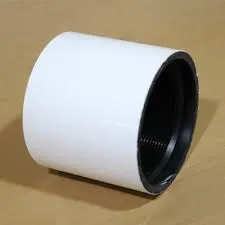- Afrikaans
- Albanian
- Amharic
- Arabic
- Armenian
- Azerbaijani
- Basque
- Belarusian
- Bengali
- Bosnian
- Bulgarian
- Catalan
- Cebuano
- Corsican
- Croatian
- Czech
- Danish
- Dutch
- English
- Esperanto
- Estonian
- Finnish
- French
- Frisian
- Galician
- Georgian
- German
- Greek
- Gujarati
- Haitian Creole
- hausa
- hawaiian
- Hebrew
- Hindi
- Miao
- Hungarian
- Icelandic
- igbo
- Indonesian
- irish
- Italian
- Japanese
- Javanese
- Kannada
- kazakh
- Khmer
- Rwandese
- Korean
- Kurdish
- Kyrgyz
- Lao
- Latin
- Latvian
- Lithuanian
- Luxembourgish
- Macedonian
- Malgashi
- Malay
- Malayalam
- Maltese
- Maori
- Marathi
- Mongolian
- Myanmar
- Nepali
- Norwegian
- Norwegian
- Occitan
- Pashto
- Persian
- Polish
- Portuguese
- Punjabi
- Romanian
- Russian
- Samoan
- Scottish Gaelic
- Serbian
- Sesotho
- Shona
- Sindhi
- Sinhala
- Slovak
- Slovenian
- Somali
- Spanish
- Sundanese
- Swahili
- Swedish
- Tagalog
- Tajik
- Tamil
- Tatar
- Telugu
- Thai
- Turkish
- Turkmen
- Ukrainian
- Urdu
- Uighur
- Uzbek
- Vietnamese
- Welsh
- Bantu
- Yiddish
- Yoruba
- Zulu
bull plug pressure rating
Understanding Bull Plug Pressure Ratings A Comprehensive Guide
Bull plugs, often referred to as blind flanges, play a crucial role in various industrial applications, particularly in the oil and gas, chemical, and water treatment industries. These devices are essential in sealing off pipe ends and maintaining pressure within pipelines. One of the critical parameters when selecting a bull plug is its pressure rating, which dictates the maximum pressure the plug can safely withstand without failure. In this article, we will explore the significance of bull plug pressure ratings, the factors influencing them, and best practices when choosing the right bull plug for your needs.
What is a Bull Plug?
A bull plug, typically made of materials like carbon steel, stainless steel, or plastic, serves as a closure device that plugs the end of a pipe or vessel. These plugs help ensure the integrity of the pipeline by preventing leaks and maintaining the desired pressure within the system. They are vital in scenarios where a temporary or permanent seal is necessary, such as during maintenance operations or when capping off inactive piping.
Importance of Pressure Ratings
The pressure rating of a bull plug is a vital specification that determines its suitability for specific applications. Pressure ratings are usually expressed in pounds per square inch (psi) or bar, denoting the maximum operational pressure the plug can endure. Choosing a bull plug with an appropriate pressure rating is crucial to avoid catastrophic failures, which can lead to costly downtime, potential safety hazards, and significant environmental impact.
Factors Affecting Bull Plug Pressure Ratings
1. Material Composition The type of material used to manufacture the bull plug significantly influences its pressure rating. For instance, stainless steel plugs typically have higher pressure ratings than those made from standard carbon steel due to their enhanced strength and corrosion resistance.
2. Design and Dimensions The design, including the wall thickness and diameter of the bull plug, affects its ability to handle pressure. Thicker walls generally increase the pressure rating, while larger diameters might necessitate a redesign to ensure structural integrity under high-pressure conditions.
3. Temperature Conditions The temperature of the medium within the pipe can also impact the pressure rating of a bull plug. Many materials lose strength at elevated temperatures, so it's crucial to consider the operating temperature range when selecting a bull plug.
bull plug pressure rating

4. Standards and Certifications Various industry standards govern the performance and testing of bull plugs. For instance, the American Society of Mechanical Engineers (ASME) and the American National Standards Institute (ANSI) set pressure rating guidelines. Ensuring the bull plug meets these standards can provide additional reassurance regarding its performance and safety.
Selecting the Right Bull Plug
When selecting a bull plug, consider the following steps to ensure optimal performance
1. Identify the Application Determine the specific requirements of your application, including the operating pressure, temperature, and the nature of the fluid being contained.
2. Consult Pressure Ratings Review the pressure ratings provided by manufacturers for various bull plugs. It's essential to select a plug that exceeds the maximum expected pressure in your application to ensure a safety margin.
3. Material Selection Choose a material that not only meets the pressure rating requirements but is also compatible with the fluid being contained. Consider corrosion resistance, particularly in harsh environments.
4. Installation Considerations Proper installation of the bull plug is essential to ensure it achieves its intended pressure rating. Follow manufacturer guidelines and best practices during installation to avoid operational issues.
Conclusion
In summary, the pressure rating of a bull plug is a fundamental aspect that must not be overlooked when designing or maintaining pipelines. A proper understanding of how pressure ratings are influenced can help engineers and technicians select the right components for their systems, ensuring not only functionality but also safety and reliability. By considering material properties, design specifications, and operating conditions, industries can effectively prevent leaks and other failures, safeguarding both operational efficiency and environmental stewardship.
-
Tubing Pup Joints: Essential Components for Oil and Gas OperationsNewsJul.10,2025
-
Pup Joints: Essential Components for Reliable Drilling OperationsNewsJul.10,2025
-
Pipe Couplings: Connecting Your World EfficientlyNewsJul.10,2025
-
Mastering Oilfield Operations with Quality Tubing and CasingNewsJul.10,2025
-
High-Quality Casing Couplings for Every NeedNewsJul.10,2025
-
Boost Your Drilling Efficiency with Premium Crossover Tools & Seating NipplesNewsJul.10,2025







